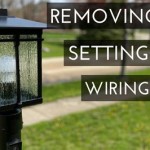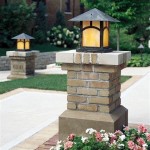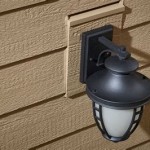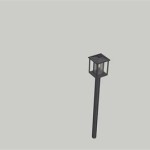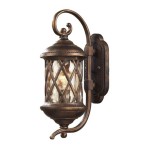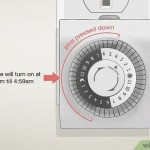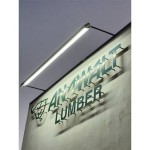Illuminating Your Outdoors: A Comprehensive Guide to Dusk-to-Dawn Flood Lights
Outdoor flood lights that operate from dusk till dawn offer a practical and energy-efficient solution for illuminating properties. These lights automatically activate at sunset and deactivate at sunrise, providing consistent security, safety, and aesthetic enhancement without manual intervention. This functionality relies on a built-in photocell sensor that detects ambient light levels, triggering the on/off cycle appropriately. The market offers a wide array of these lights, differing in wattage, light color, design, and technology, ensuring options for diverse needs and preferences.
Dusk-to-dawn flood lights are increasingly favored for their ease of use and energy-saving potential. By automating the lighting schedule, users can minimize the risk of forgetting to turn lights on or off, optimizing energy consumption. They are commonly employed in residential, commercial, and industrial settings to illuminate driveways, walkways, parking lots, building facades, and security-sensitive areas.
Key Advantages of Dusk-to-Dawn Functionality
The primary benefit of dusk-to-dawn flood lights is their hands-free operation. The integrated photocell eliminates the need for manual switching or timers, streamlining the lighting process. This feature is particularly valuable for individuals with limited mobility or properties requiring constant illumination. The automatic operation also helps maintain a sense of security, deterring potential intruders by ensuring consistent lighting presence.
Furthermore, the automatic operation inherently contributes to energy savings. Regular flood lights, when left on continuously, can significantly increase energy bills. Dusk-to-dawn lights, by operating only when needed, reduce overall energy consumption, leading to lower electricity costs and a smaller carbon footprint. This makes them a sustainable lighting choice for environmentally conscious consumers.
Finally, dusk-to-dawn lights offer convenience in situations where accessibility to the light fixture is difficult or inconvenient. For lights installed in high or hard-to-reach locations, the automatic on/off function eliminates the need for frequent manual intervention, reducing the maintenance burden.
Understanding the Technology: Photocell Operation and Light Sources
The core of a dusk-to-dawn flood light is its photocell sensor. This sensor, typically a cadmium sulfide (CdS) cell or a similar light-sensitive resistor, measures the intensity of ambient light. In bright daylight, the resistance of the photocell is low, preventing current from flowing to the light. As daylight fades and darkness approaches, the resistance increases, allowing current to flow and activate the light. The sensitivity of the photocell is often adjustable, enabling users to fine-tune the activation threshold based on specific location requirements and desired light levels.
Dusk-to-dawn flood lights are available with various light source options, each with its own characteristics and advantages. Traditional options include incandescent and halogen bulbs, known for their warm light output but generally less energy-efficient. These are becoming less common due to their high energy consumption and shorter lifespan.
Light-emitting diode (LED) technology is now the dominant choice for dusk-to-dawn flood lights. LEDs offer significantly higher energy efficiency, longer lifespan, and greater durability compared to incandescent and halogen bulbs. They also produce less heat and are available in a wider range of color temperatures, from warm white to cool white and even color-changing options. LED flood lights also offer instant-on capability, reaching full brightness immediately upon activation, unlike some older technologies that require a warm-up period.
Another option, though less common now, is compact fluorescent lamps (CFLs). While more efficient than incandescent bulbs, CFLs contain mercury and require careful disposal. They also have a slower warm-up time compared to LEDs and are generally less durable in outdoor environments.
Factors to Consider When Choosing Dusk-to-Dawn Flood Lights
Selecting the right dusk-to-dawn flood light requires careful consideration of several factors. The desired brightness, measured in lumens, is a crucial aspect. The appropriate lumen output will depend on the size of the area to be illuminated and the intended purpose of the lighting. For general area lighting, a lower lumen output may suffice, while security lighting often requires higher brightness levels.
The color temperature of the light, measured in Kelvin (K), is another important consideration. Lower Kelvin values (e.g., 2700K-3000K) produce a warm, yellowish light, which is often preferred for residential settings and creating a cozy atmosphere. Higher Kelvin values (e.g., 4000K-5000K) produce a cool, white light, which is better suited for security applications and areas where visibility is paramount.
The durability and weather resistance of the flood light are also critical, especially for outdoor installations. Look for lights with a high Ingress Protection (IP) rating, indicating their resistance to dust and water. An IP65 rating or higher is generally recommended for outdoor flood lights, signifying protection against water jets from any direction. The housing material should also be durable and corrosion-resistant, such as aluminum or stainless steel.
The mounting options and adjustability of the flood light should also be considered. Some lights are designed for wall mounting, while others are suitable for pole mounting or ground mounting. The ability to adjust the angle of the light is important for directing the light beam precisely where it is needed. Some models offer adjustable photocell sensitivity, allowing users to customize the light activation threshold based on their specific location and preferences.
Consider the overall design and aesthetics of the flood light. With a wide range of styles and finishes available, it's possible to choose a light that complements the architectural style of the building and enhances the overall appearance of the property. Some models offer integrated designs where the photocell is seamlessly integrated into the light fixture, while others have a separate photocell that can be positioned independently.
Energy efficiency and operating costs are also important considerations. Look for flood lights with high energy efficiency ratings, such as Energy Star certification. This indicates that the light meets specific energy efficiency standards and will consume less electricity over its lifespan. Compare the wattage and lumen output of different models to determine the most energy-efficient option for your needs.
Finally, consider the warranty and customer support offered by the manufacturer. A reputable manufacturer will typically offer a warranty of at least one year, and some may offer longer warranties, providing assurance of the product's quality and reliability. Check online reviews and ratings to assess the manufacturer's reputation and customer support responsiveness.
Installation and Maintenance of Dusk-to-Dawn Flood Lights
The installation of dusk-to-dawn flood lights typically involves connecting the light fixture to the electrical wiring and mounting it in the desired location. It is essential to follow all local electrical codes and safety regulations during installation. If you are not comfortable working with electrical wiring, it is recommended to hire a qualified electrician to perform the installation. To ensure proper operation, the photocell sensor should be positioned so that it is exposed to ambient light and not shaded by trees, buildings, or other obstructions. The sensor should also be oriented away from direct light sources, such as street lights or other flood lights, which could interfere with its operation.
Regular maintenance of dusk-to-dawn flood lights is minimal but essential to ensure optimal performance and longevity. Periodically clean the lens of the flood light to remove dust, dirt, and debris, which can reduce light output. Check the wiring connections to ensure they are secure and free from corrosion. Inspect the photocell sensor to ensure it is clean and undamaged. Replace the light bulb or LED module when it burns out or begins to dim. When replacing bulbs, use the appropriate wattage and type recommended by the manufacturer.
Troubleshooting issues with dusk-to-dawn flood lights may involve checking the power supply, the wiring connections, and the photocell sensor. If the light is not turning on at dusk, check the power switch and the circuit breaker to ensure they are in the on position. Verify that the wiring connections are secure and that there are no loose wires or corroded contacts. Test the photocell sensor by covering it with your hand to simulate darkness. If the light turns on when the sensor is covered, it indicates that the sensor is functioning properly. If the light still does not turn on, the photocell sensor may be faulty and require replacement.
Proper disposal of used flood lights is important to minimize environmental impact. Incandescent and halogen bulbs can be disposed of in the regular trash, but CFLs contain mercury and should be recycled at a designated recycling facility. LED lights do not contain mercury but may contain other hazardous materials and should also be recycled whenever possible. Check with your local municipality or waste management company for information on recycling options in your area.
Dusk-to-dawn flood lights offer a practical and energy-efficient solution for illuminating outdoor spaces. By understanding the technology, considering the key factors in selecting the right light, and following proper installation and maintenance procedures, individuals can maximize the benefits of these lights and create a safer, more secure, and aesthetically pleasing environment.

Lithonia Lighting 150 Watt Eq Hardwired Led Dark Broe 3 Head Dusk To Dawn Flood Light 4100 Lumen In The Lights Department At Com

Lithonia Lighting 150 Watt Eq Hardwired Led Dark Broe 2 Head Dusk To Dawn Flood Light 2750 Lumen In The Lights Department At Com

18 Watt Broe Dusk To Dawn Outdoor Integrated Led Flood Light Wall Eaves Mountable Dw10093az8 C The Home Depot

Lutec Broe Outdoor Integrated Led Dusk To Dawn Flood Light 6301s Pho The Home Depot

White 8 1 2 High Dusk To Dawn Led Outdoor Flood Light 76h21 Lamps Plus

Lithonia Lighting 150 Watt Eq Hardwired Led White 2 Head Dusk To Dawn Flood Light 2700 Lumen In The Lights Department At Com

Leonlite Motion Sensor Led Security Light Dusk To Dawn Outdoor Flood Lights Adjustable 2 Head Ip65 Waterproof 20w 150w Eqv Warm White Com

150w 200w Solar Street Lights Dusk To Dawn With Motion Sensor And Remote Control Led Flood Light Suitable For Courtyards Gardens Basketball Courts China Made In Com

Outdoor Security Flood Light W Dusk To Dawn Photocell Sensor

Leonlite Motion Sensor Led Security Light Dusk To Dawn Outdoor Flood Lights Adjustable 2 Head Ip65 Waterproof 20w 150w Equiv 5000k Daylight Com
